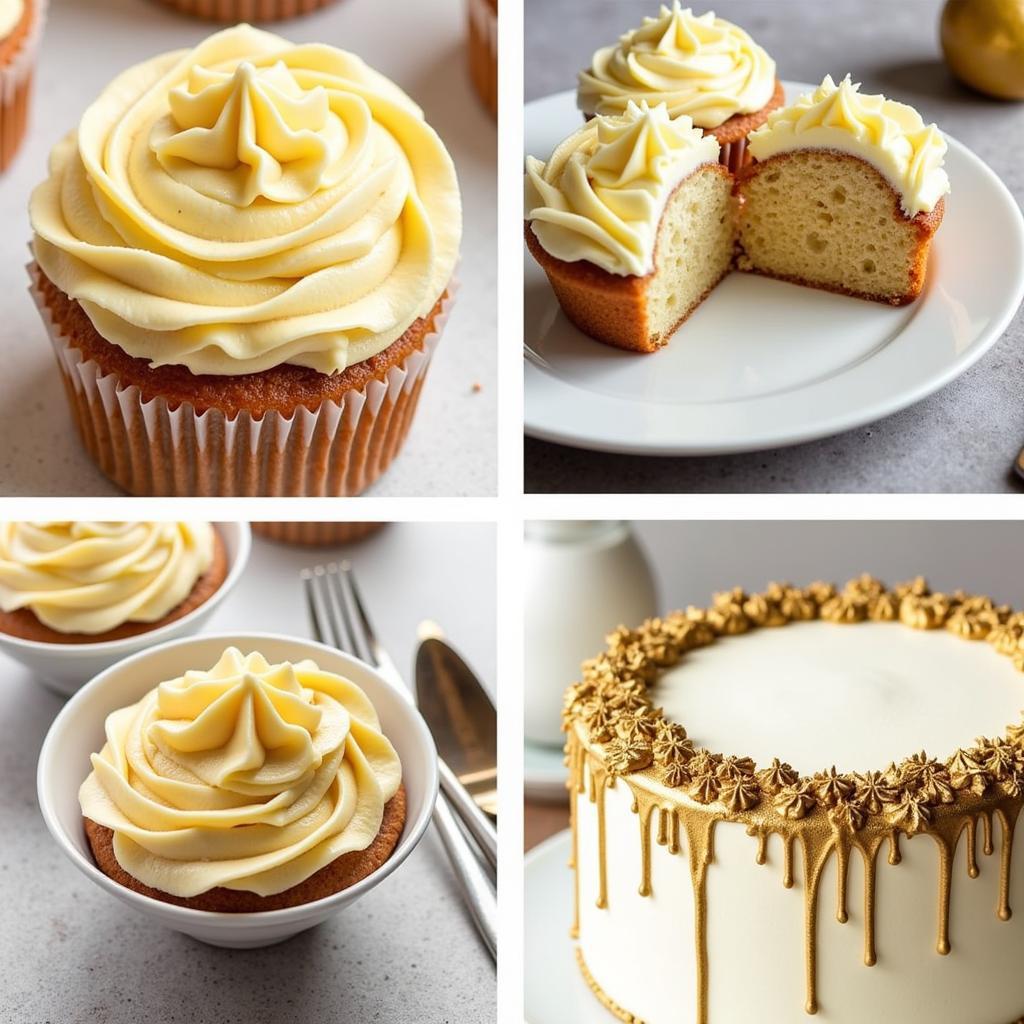Achieving a shimmering gold hue with food coloring can seem tricky, but with the right techniques and a dash of color know-how, you can transform your culinary creations into gilded masterpieces. Let’s explore the secrets to making gold with food coloring.
Mixing gold with food coloring involves a strategic blend of yellow and a touch of other colors to achieve the desired depth and richness. Sometimes a bit of experimenting is required to get the perfect shade. You can even incorporate mica colorant for an extra shimmer, similar to the way you might when creating skin tones with paint. what colors make skin tone with paint It’s all about understanding the interplay of colors and how they interact to produce a believable gold.
Mastering the Golden Ratio: Yellow and a Touch of Magic
The foundation of any gold food coloring mixture is yellow. Start with a generous amount of yellow food coloring and then carefully introduce small amounts of other colors to refine the shade. Red, orange, and even a tiny drop of brown can add warmth and depth, mimicking the nuances of real gold.
- Begin with a base of yellow food coloring.
- Gradually add small drops of red or orange.
- For a deeper, more antique gold, incorporate a tiny amount of brown.
- Test the color on a small portion of your frosting or batter before applying it to the entire batch.
Different Types of Gold: From Shimmering to Antique
Just like paint colors, gold comes in various shades, each with its unique character. Do you envision a bright, shimmering gold, reminiscent of a freshly minted coin? Or perhaps a warmer, more antique gold, evoking a sense of history and tradition? Understanding the different types of gold will guide your color mixing process.
Creating a Shimmering Gold
For a bright and shimmering gold, focus on yellow and a touch of orange. Avoid adding brown, as this will dull the vibrancy. A tiny touch of white can lighten the overall shade, resulting in a more ethereal gold. Want to learn how to make teal colored frosting? Click the link to explore more color combinations. how to make teal colored frosting
Achieving an Antique Gold Effect
To create an antique gold, incorporate a small amount of brown into your yellow and orange mixture. The brown will deepen the color and create a more muted, aged appearance. Experiment with different ratios of brown to achieve the desired level of antiquity.
 Creating Antique Gold with Food Coloring
Creating Antique Gold with Food Coloring
Enhancing Gold with Mica Colorant
For an extra touch of shimmer and dimension, consider using mica colorant. what is mica colorant This edible powder adds a pearlescent sheen, transforming your gold from flat to fabulous. Mica colorants come in various shades, including gold, which can be used alone or mixed with other food colorings to enhance their vibrancy.
“Mica colorant is a game-changer when it comes to achieving a truly luxurious gold,” says renowned pastry chef, Amelia Dubois. “It adds a depth and shimmer that traditional food coloring simply can’t replicate.”
Troubleshooting Common Gold Coloring Issues
Sometimes, despite our best efforts, the gold doesn’t turn out quite right. Here are a few common issues and how to fix them:
- Color too pale: Add more yellow and a touch of orange.
- Color too orange: Add more yellow to balance the orange tones.
- Color too brown: Start over with a fresh batch, using less brown.
“Remember, patience is key when working with food coloring,” advises Amelia Dubois. “It’s always better to add color gradually than to overdo it and have to start again.”
 Gold Food Coloring Variations
Gold Food Coloring Variations
Conclusion
Making the color gold with food coloring is an art that involves careful observation, a touch of experimentation, and an understanding of color theory. By mastering the balance of yellow, orange, brown, and perhaps even some mica, you can transform your culinary creations into golden delights. Don’t be afraid to try new things – after all, what color is rice if not a canvas for your culinary artistry? what color is the rice With practice and a little patience, you’ll be creating golden masterpieces in no time.
FAQ
- Can I use gel food coloring to make gold? Yes, gel food coloring is a great option for creating vibrant gold hues.
- How do I make rose gold with food coloring? Combine pink or red with a touch of yellow and a tiny drop of brown.
- What can I do if my gold color is too dark? Add a small amount of white food coloring to lighten the shade.
- Can I use natural food coloring to make gold? Achieving a true gold with natural food coloring can be challenging, as natural options often lack the intensity of artificial colors.
- Where can I buy mica colorant? Mica colorant is available online and in specialty baking stores.
Scenarios
- Birthday Cake: A shimmering gold frosting adds a touch of elegance to a birthday cake.
- Cookies: Gold accents on cookies create a festive look for special occasions.
- Cupcakes: Gold swirls and sprinkles elevate cupcakes to a gourmet level.
Further Exploration
For more tips and tricks on working with colors, check out our article on summing by color in Excel. can you sum by color in excel
Need help with your color projects? Contact us at 0373298888, email us at [email protected], or visit us at 86 Cầu Giấy, Hanoi. We have a 24/7 customer service team ready to assist you.
